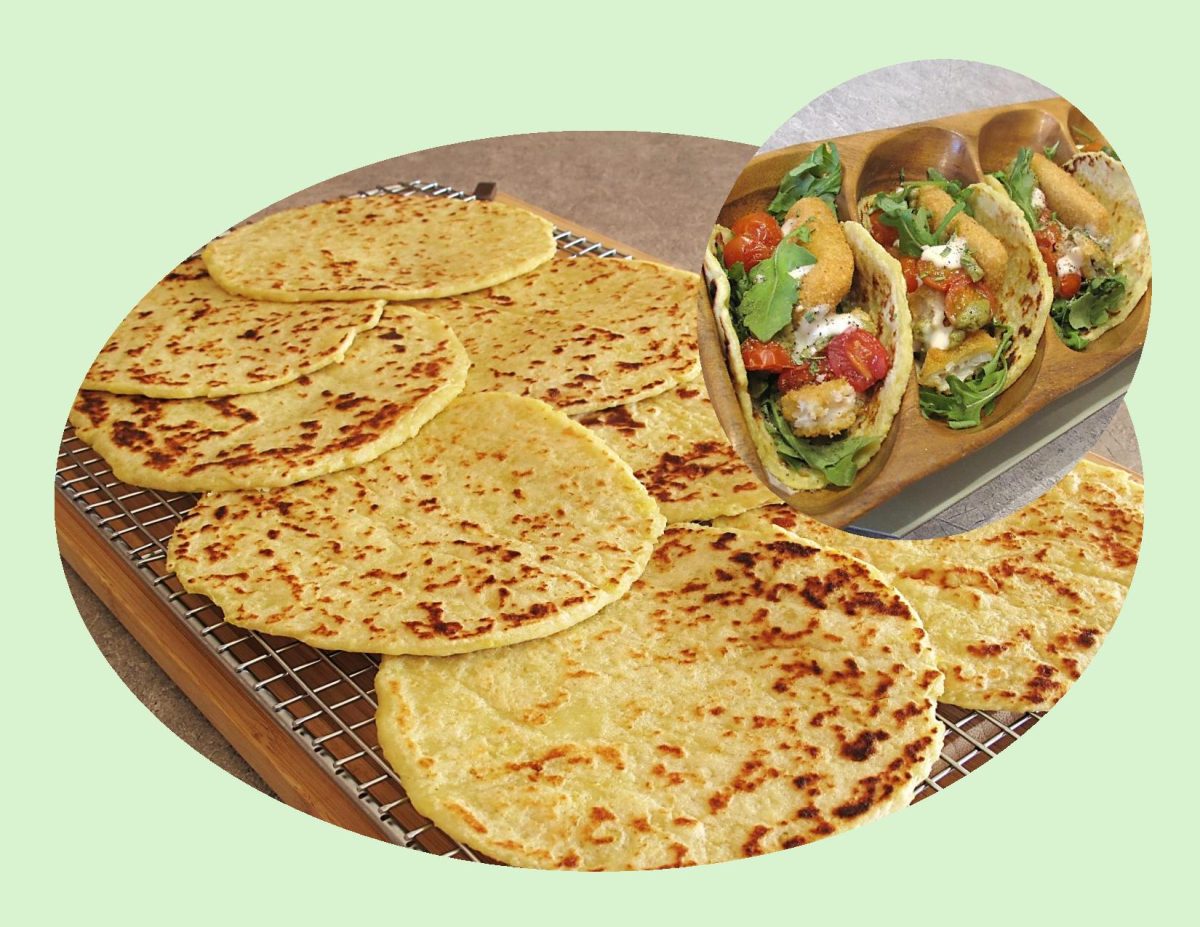From a traditional homemade staple to a quick on-the-go snack from a gas station to ferries or even a fancy dish at a wedding, the story of lefse is intertwined with Norwegian history.
The first lefse didn’t contain potatoes, they were made from flour. Women would travel from house to house, village to village to make lefse to last the winter months. The flour lefse would cook up like a cracker and be able to last through the season. Many households stored their lefse is wooden boxes covered in cloth or just stacked on shelves. When you were ready to enjoy some lefse it was dipped in water and soaked between damp cloth until softened.
Then came the introduction of potatoes, abundant and easy to grow. The potato was incorporated into many Norwegian foods. Like Ireland, Norway suffered from the effects of the potato famine in the mid-1800’s, which is about the time that many Norwegians came to North America. They brought their knowledge and rolling pins. The result is a Norwegian ‘potato bread’ delicacy that is part of a special tradition replicated in many Norwegian-American homes for more than 150 years.
In Norway, the lefse is sweet or savory, thick or thin, can be made from wheat or potatoes, and can be served with a wide variety of accompaniments. Recipes and even names vary considerably across Norway.
In many parts of western, eastern and central Norway, lefse are used as an alternative to bread. They are eaten with savory, salty foods or with sweet foods.
Common savory fillings include cured ham and cheese. They can also be served as wraps, with fillings such as smoked salmon and cream cheese. Common sweet fillings are sugar and cinnamon. These are often served folded or rolled into tubes. As with waffles, the combination of brown cheese (or ‘brunost’ is a tan-colored ‘whey cheese’ with a distinctive caramel flavor) and jam is another sweet option.
There is no one best lefse recipe. You can choose to make thick, sweet lefse, or thin ones for savory wraps, with potato or without. There are so many options, not to mention the countless ‘secret’ family recipes handed down through generations.
I recall the first time I ever had the opportunity to try Norwegian lefse. I was in grade school and my friend asked me to come to her house for lunch. At the time, I wasn’t really sure what to make of it, but I remember it tasted good … just like a thin potato pancake!
Brion & I decided to use our lefsa as a wrap and make fish ‘tacos’ out of them. It turned out to be a great choice!

| Servings |
|
- 397 gm (about 1 3/4 cups) potatoes, peeled & cubed
- 1 1/2 tsp butter,
- 1 small egg
- 1/4 tsp sugar
- 1/4 tsp baking powder
- 3/4 tsp salt
- 1 cup flour
- 2-3 Tbsp milk or as needed
Ingredients
|

|
- In a pot, place potatoes & cover with cold water. Put a lid on the pot & bring to a boil. Reduce heat to a simmer & cook until soft. Drain & put potatoes through a ricer (or grate fine) while still hot. Combine with butter & refrigerate until cool.
- Combine potatoes with the rest of the ingredients. Mix just until blended. Add milk only if needed to combine dough. Cover & chill thoroughly.
- Divide dough into 8 equal pieces & roll into balls. Between 2 sheets of dry waxed paper roll each ball to a 6-inch diameter.
- Heat a flat griddle to 400 F.
- Grill lefsa, flipping mid-way through, about 60 seconds on each side, or until freckled.
- Serve warm or at room temperature as is or with topping or 'filling' of choice.
- The yield will vary depending on how much dough you use for each one.
- SOME FILLING SUGGESTIONS:
- Spread with butter & a sprinkle of brown sugar
- Spread with mustard & wrap around sausage, brats or hot dogs
- Spread with butter or cream cheese & wrap around leftover chicken, turkey, pot roast or your favorite deli meat. Eat hot or cold.
- Use as a wrap for salads such as egg, tuna, chicken & salmon.
- Spread with cranberry sauce, applesauce or Nutella.
- Wrap around warm meatballs.
- Wrap around scrambled eggs with or without crumbled sausage or bacon.

